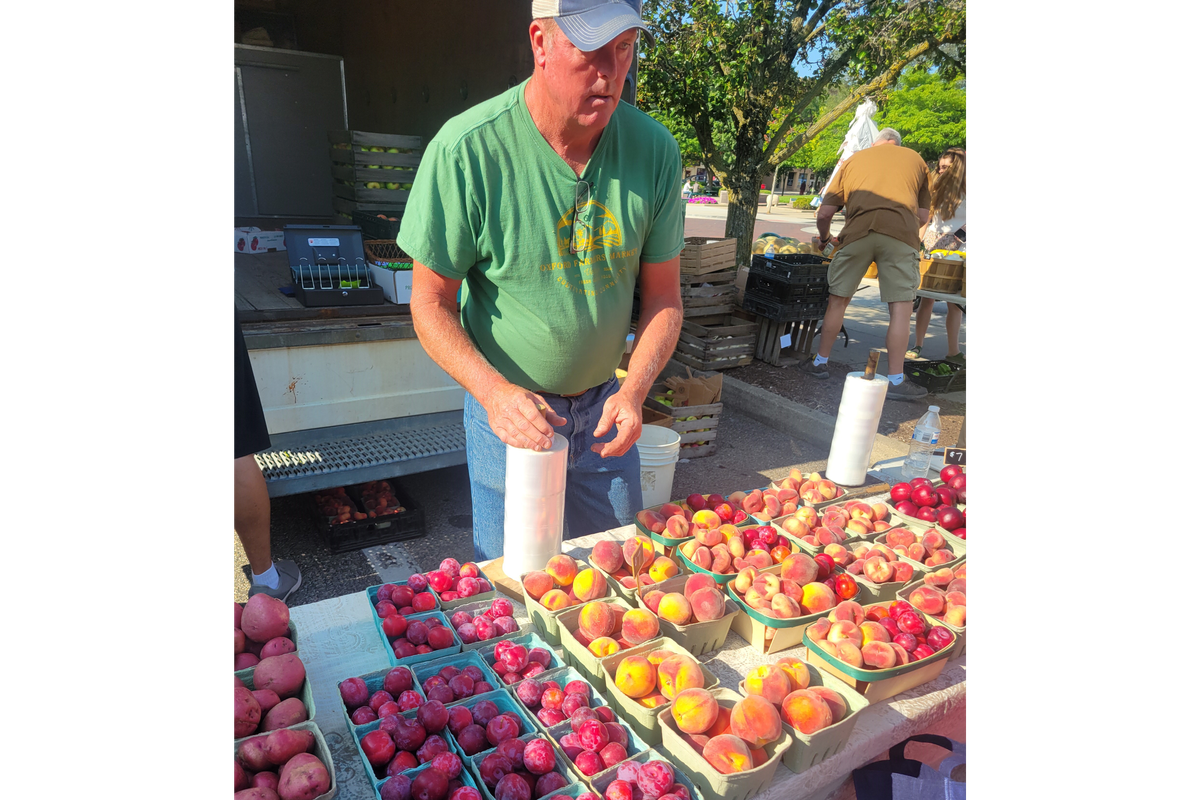Georgia is the peach state, but Oxford is nectarine city
Like their close cousins the peaches, nectarines taste best when grown locally. Lucky for Oxford residents, the less common stone fruit has made an appearance at the farmers market this year.

Oxford’s local stone tree fruit season is in full swing. Locally grown nectarines and plums have joined peaches at Oxford’s Farmers Market.
We’ve had at least a few local plums most years, and I wrote about local peaches in this column two weeks ago, but local nectarines are less common. If nectarines have been available in Oxford’s Farmers Markets in recent years, I’ve overlooked them. Peach and nectarine trees blossom in the spring and bear fruit during the summer, hence their susceptibility to the late-spring freezes that we have experienced here recently, but not this year.
“Discover the surprising truth about nectarines,” writes the Food Network’s website. The “surprising truth” is that, contrary to widespread belief, a nectarine is not a genetically modified peach. Nectarines and peaches share the same botanical name Prunus persica, and are identical to each other except for one gene, which causes a peach to have a fuzzy skin and a nectarine to have a smooth skin.
Nectarines developed from peaches several thousand years ago in China by natural mutation. Peach trees and nectarine trees are both self-pollinating, and as a result nectarines can sometimes appear on peach trees and vice versa.
Trade routes took the nectarine west to ancient Persia, Greece and Rome. The Greeks named the fruit “nectar,” which is Greek for “drink of gods.” The Spanish introduced nectarines to California, where more than 95% of the U.S. crop is currently grown.
Nectarines, like peaches, are clingstone or freestone, with either white or yellow flesh. Downing Fruit Farm’s nectarines at Oxford’s Farmers Market are white clingstone. Freestones tend to be more popular because of the ease of cutting away the flesh from the pit, but clingstones are considered sweeter.
Local nectarines need to be handled the same way as peaches. When you bring them home from the Farmers Market, keep the nectarines on the counter, not in the refrigerator. Watch them closely and move them to the refrigerator as soon as they are soft, where they can be held for a few more days.
I am finding that the local nectarines are more forgiving than the local peaches. Some local peaches were too ripe when I got them home, and some that I refrigerated before going on vacation never got soft.
Given the fresh supply of local nectarines on the counter, I used the suboptimal local peaches to make a crisp, which is a lighter summer dessert than a pie or cobbler. I placed sliced peaches in a baking dish, covered them with a layer of granola mixed with a pat of butter, sprinkled the top with cinnamon, and baked for 15 minutes at 350.
I wrote three weeks ago that peach production has plummeted in the United States, primarily because of consumer dissatisfaction with supermarket peaches that are picked too soon in California and never ripen during their lengthy transport to reach us in the Midwest. U.S. nectarine production has similarly plummeted, and for similar reasons.
Despite being near-twins, nectarines get short shrift compared to peaches. U.S. peach production is six times higher than nectarine production. Many peach festivals are held in the United States, but I searched the internet in vain for a nectarine festival. “Peach State” adorns Georgia’s license plates, but no one claims to be “the nectarine state.”
For now, at least, Oxford is a local “nectarine city.”
James Rubenstein is the president of the Board of Directors for the Oxford Free Press and professor emeritus of geography at Miami University.




